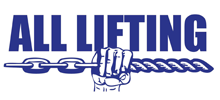
A Complete Guide to Eye Bolts: Types, Safety Tips & Common Uses
An eye bolt is a bolt with a loop (or eye) at one end, designed to create a secure anchor point for ropes, cables, or lifting equipment. Eye bolts are used across a wide range of industries for lifting, tensioning, and securing loads.
A common type used in lifting applications is the Collared Lifting Eyebolt (AS2317), designed to connect to a tapped hole in lifting, tensioning, and staying systems. The Safe Working Load of each component must always take into account both inherent and applied loads to ensure safe operation.
Types of Eye Bolts
Eye bolts come in a variety of designs to suit different applications:
- Forged Eye Bolts: Designed for heavy-duty applications. The eye is forged for strength and can withstand high loads.
- Bent Eye Bolts: Suitable for light-duty, non-lifting applications. These are not recommended for heavy loads or lifting.
- Collared Eye Bolts: Fully threaded and reinforced with a collar. Safe for lifting at angles up to 45°. Eye bolts without a collar should only be used for straight vertical lifting.
- Swivel Eye Bolts and Swivel Ring Bolts: Designed to rotate 360° and allow movement under load and suitable for lifting at various angles.
- Commercial Eye Bolts/Screw Eyes: Intended for light-duty applications such as securing ropes to posts. These are not rated for lifting or suspending loads.
- Load Rated Eye Bolts: Designed for lifting applications, with the Working Load Limit (WLL), batch number, and thread size clearly stamped on the body.
- Stainless Steel Eye Bolts: Ideal for corrosive or marine environments due to their resistance to rust.
All Lifting supplies rated eye bolts from 0.5 tonne up to 11.5 tonne WLL, along with a wide range of commercial, stainless steel, and screw eye bolts.
Manufacturing & Quality Standards
All of our eye bolts are manufactured in compliance with ISO 9001 Quality Standards and subject to strict process control. Samples from each production run are tested to meet AS2317-1998 requirements.
Eye bolts are available in mild steel (G-300) or heat-treatable alloy materials, manufactured to customer specifications. For sizes above M36, eye bolts undergo proof testing only.
Key Safety Considerations
Working Load Limit (WLL): The maximum load applied along the vertical axis of the eyebolt.
Safe Working Load (SWL): The maximum load the eyebolt can safely handle in a specific lifting configuration.
Safety Factor: Both metric and imperial eye bolts feature a safety factor of 6:1, in line with AS2317:1998.
Installation & Maintenance Guidelines
Thread Selection: Ensure the thread form of the eyebolt matches that of the corresponding hole or nut.
Collar & Face Seating: The collar face and contacting surface must be flat, smooth, and perpendicular to the threaded hole to achieve the rated WLL.
Eyebolt Maintenance: When reusing eyebolts, inspect regularly for wear or damage, particularly on thread forms and the eye.
Correct Fitting of Eyebolt Pairs
- When using eyebolts in pairs, ensure they are properly aligned.
- Do not force eyebolts into alignment as this reduces SWL.
Eye bolts are a versatile and essential component in lifting, securing, and rigging systems. From light-duty applications to heavy lifting, choosing the right eyebolt and following proper installation and maintenance guidelines is critical to safety and performance.
All Lifting stocks a full range of commercial and rated eye bolts, including stainless steel options, available in both metric and imperial threads, and left or right-hand threads.
If you’d like assistance selecting the right eyebolt for your project, contact our friendly team at All Lifting. We’re here to help!


